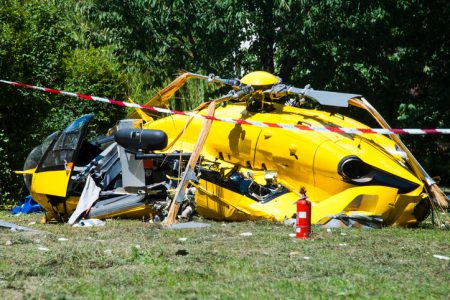FAA regulations do not cover all the bases, the NTSB wants to add more recording devices to aircraft
If the FAA Regulations had required that all commercial helicopters had data and image recorders onboard, then the Kobe Bryant accident, and others like it, might have been explained in record time. Quick answers would not only help grieving families, but make flying safer too, as pilots and helicopter operators learn from tragedies.
For that reason, the NTSB is now calling for data and image recorders on all turbine helicopters. According to an NTSB report, 86% of 185 turbine-powered helicopter accidents investigated between 2005 and 2017 had no recording equipment of any kind onboard. That means a lot of lessons have gone to the grave with the flight crew.
The “safety recommendation report” strongly called for the installation of impact-resistant systems to record data, audio, and images on all turbine helicopters. NTSB investigators said that not having this data has impeded their understanding of what happened during the final moments of numerous accidents. It goes without saying that this information could certainly have flight safety implications.
According to NTSB Office of Aviation Safety director Dana Schulze, “The more information we have, the better we can understand not only the circumstances of a crash but what can be done to prevent future accidents. We are asking that currently available recording technology be put to use in a way that will improve aviation safety.”
The Helicopter Association International (HAI) was supportive of the recommendation but questioned why piston helicopters were not included. More than one-third of the US helicopter fleet uses piston engines and there doesn’t seem to be enough data to support any measurable safety difference between piston and turbine. Using these recording devices as part of a flight data management (FDM) program would provide operators with the tools needed to reduce accidents and improve overall industry safety, regardless of the type of engine installed.
HAI will be adding this recommendation to its Accreditation Program of Safety that encourages operators to fly to a higher standard. The organization is convinced that FDM is a valuable strategy to reduce the top three causes of fatal helicopter accidents: loss of control in flight, unintended instrument meteorological conditions, and low altitude operations.
FAA regulations do a great job keeping the aviation community safe, but sometimes a little extra help is needed. The NTSB safety recommendation is a perfect example of going that extra distance to increase the safety of an entire industry.
RELATED CTS TRAINING










